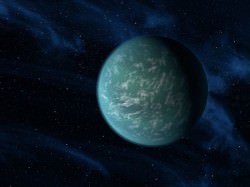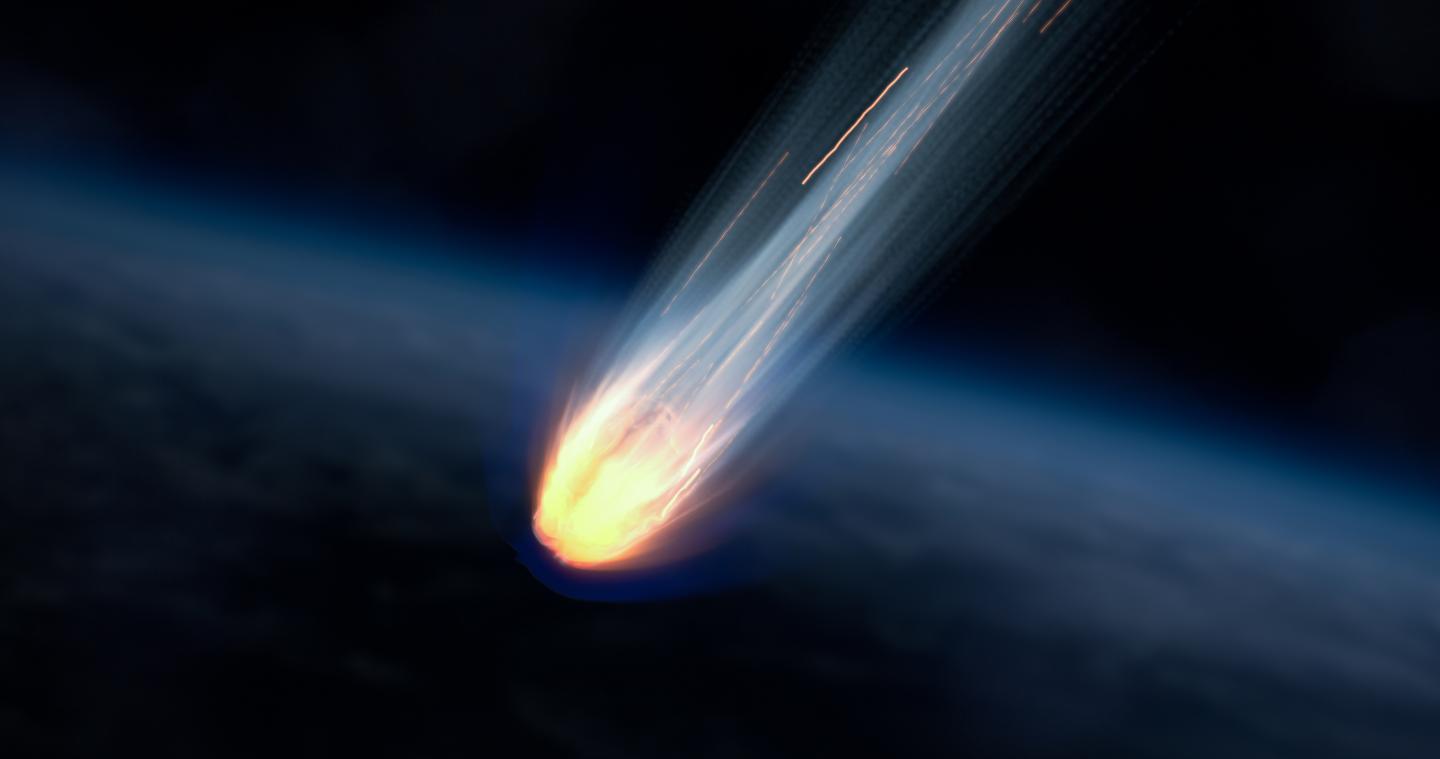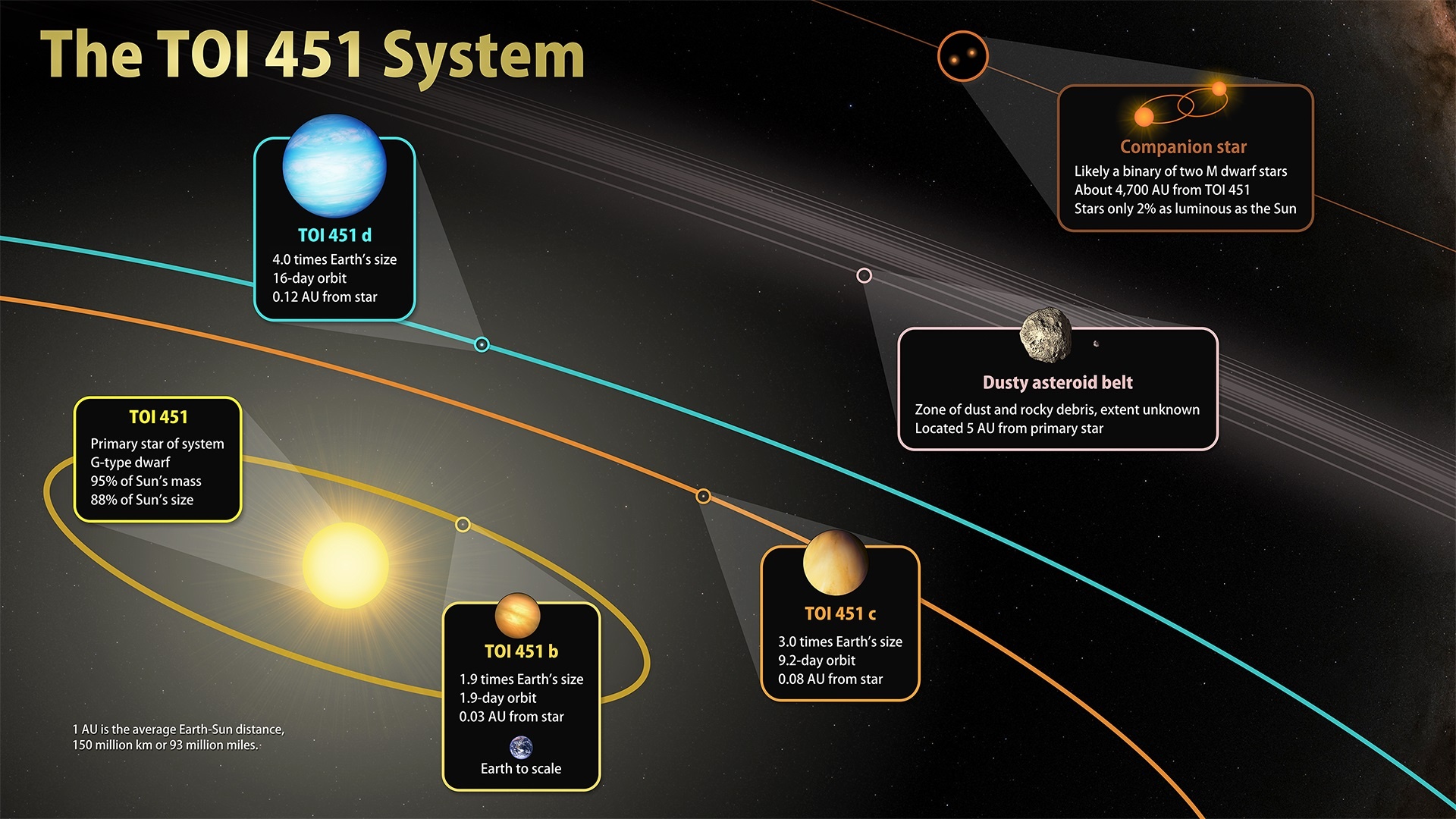A 2023 expedition to the Pacific Ocean, searching for debris from a suspected extraterrestrial object, may have been looking in the wrong place. A new look at the infrasound data used to locate the point of impact suggests that they may have been confused by the rumblings of a truck driving past.
Continue reading “The Sound of an Interstellar Meteor Might Have Just Been a Rumbling Truck”Just Some of the Planets That TESS Has Found Nearby
Ever since NASA’s Kepler Space Telescope was launched in 2009, there has an explosion in the study of the extrasolar planets. With the retirement of Kepler in 2018, it has fallen to missions like the Transiting Exoplanet Survey Satellite (TESS) to pick up where its predecessor left off. Using observations from TESS, an international team of astronomers recently discovered three exoplanets orbiting a young Sun-like star named TOI 451.
Continue reading “Just Some of the Planets That TESS Has Found Nearby”By Continuously Watching the Moon, we Could Detect Interstellar Meteorites
When ‘Oumuamua crossed Earth’s orbit on October 19th, 2017, it became the first interstellar object to ever be observed by humans. These and subsequent observations – rather than dispelling the mystery of ‘Oumuamua’s true nature – only deepened it. While the debate raged about whether it was an asteroid or a comet, with some even suggesting it could be an extra-terrestrial solar sail.
In the end, all that could be said definitively was that ‘Oumuamua was an interstellar object the likes of which astronomers had never before seen. In their most recent study on the subject, Harvard astronomers Amir Siraj and Abraham Loeb argue that such objects may have impacted on the lunar surface over the course of billions of years, which could provide an opportunity to study these objects more closely.
Continue reading “By Continuously Watching the Moon, we Could Detect Interstellar Meteorites”Kepler Can Still Hunt For Earth-Sized Exoplanets, Researchers Suggest

Kepler may not be hanging up its planet-hunting hat just yet. Even though two of its four reaction wheels — which are crucial to long-duration observations of distant stars — are no longer operating, it could still be able to seek out potentially-habitable exoplanets around smaller stars. In fact, in its new 2-wheel mode, Kepler might actually open up a whole new territory of exoplanet exploration looking for Earth-sized worlds orbiting white dwarfs.
An international team of scientists, led by Mukremin Kilic of the University of Oklahoma’s Department of Physics and Astronomy, are suggesting that NASA’s Kepler spacecraft should turn its gaze toward dim white dwarfs, rather than the brighter main-sequence stars it was previously observing.
“A large fraction of white dwarfs (WDs) may host planets in their habitable zones. These planets may provide our best chance to detect bio-markers on a transiting ex- oplanet, thanks to the diminished contrast ratio between the Earth-sized WD and its Earth-sized planets. The James Webb Space Telescope is capable of obtaining the first spectroscopic measurements of such planets, yet there are no known planets around WDs. Here we propose to take advantage of the unique capability of the Kepler space- craft in the 2-Wheels mode to perform a transit survey that is capable of identifying the first planets in the habitable zone of a WD.”
– Kilic et al.
Any bio-markers — such as molecular oxygen, O2 — could later be identified around such Earth-sized exoplanets by the JWST, they propose.

Because Kepler’s precision has been greatly reduced by the failure of a second reaction wheel earlier this year, it cannot accurately aim at large stars for the long periods of time required to identify the minute dips in brightness caused by the silhouetted specks of passing planets. But since white dwarfs — the dim remains of stars like our Sun — are much smaller, any eclipsing exoplanets would make a much more pronounced effect on their apparent luminosity.
In effect, exoplanets ranging from Earth- to Jupiter-size orbiting white dwarfs as close as .03 AU — well within their habitable zones — would significantly block their light, making Kepler’s diminished aim not so much of an issue.
“Given the eclipse signature of Earth-size and larger planets around WDs, the systematic errors due to the pointing problems is not the limiting factor for WDHZ observations,” the team assures in their paper “Habitable Planets Around White Dwarfs: an Alternate Mission for the Kepler Spacecraft.”
Even smaller orbiting objects could potentially be spotted in this fashion, they add… perhaps even as small as the Moon.
The team is proposing a 200-day-long survey of 10,000 known white dwarfs within the Sloan Digital Sky Survey (SDSS) area, and expects to find up to 100 exoplanet candidates as well as other “eclipsing short period stellar and sub-stellar companions.”
“If the history of exoplanet science has taught us anything, it is that planets are ubiquitous and they exist in the most unusual places, including very close to their host stars and even around pulsars… Currently there are no known planets around WDs, but we have never looked at a sufficient number of WDs at high cadence to find them through transit observations.”
– Kilic et al.
Read the team’s full report here, and learn more about the Kepler mission here.
NASA’s Ames Research Center made an open call for proposals regarding Kepler’s future operations on August 2. Today is the due date for submissions, which will undergo a review process until Nov. 1, 2013.
Added 9/4: For another take on this, check out Paul Gilster’s write-up on Centauri Dreams.



